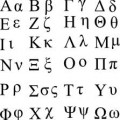- Attached to the essay "Edna’s List"
Was the first list written to encourage travel or just put to this use?
Posted July 25, 2011 4:56 pmAccording to Wikipedia, the Seven Wonders list was “based on guide-books popular among Hellenic sight-seers.” That is, that the list was essentially a marketing scheme. But was it always? The fact that the earliest lists from Antipater on were of “sights” (in Greek, theamata) and only later became “wonders” (in Greek, thaumata), seems to support the marketing theory. For help, I turned to a friend, the writer Gail Pool, who majored in classics as a Harvard undergrad. Searching her old Liddell and Scott Greek Lexicon, she came up with the following:
“Theama—theamata is the neuter plural (i.e., “things”)–is translated as “sight, spectacle.” The dictionary says it is frequently used for a sight “which gives pleasure,” and one of the citations is for the seven wonders of the world, with a reference to Strabo (i. b.c./i a.d.).
Thaumatos–again, thaumata is the neuter plural–is translated as “wonder, marvel,” and they say it is frequently used with the infinitive, as in “a wonder to behold,” a citation from the Iliad.
Both words seem to share a root: the verb theaomai–“to gaze at, behold, mostly with a sense of wonder.”
To me, these words seem very similar, and I agree with you, you can’t really read the difference between them without knowing much more about the time and context in which they were used. I wouldn’t trust online translations either unless they were written by a classical linguist.”
There are other considerations besides the language clue. Antipater’s list was written when travel was being encouraged, but by the time of his poem one of the sights, the Colossus of Rhodes, had already collapsed in an earthquake almost a century earlier. There is little doubt that Antipater’s list derived from an earlier version, now lost. That Antipater’s list might have had poetical aspects would not be too surprising in a poem. In fact, there seems to have been a mere 21 years—between the completion of the Alexandrian lighthouse, in 247 BC, and the fall of the Colossus in 226 BC—when all seven wonders were intact and could have formed an actual itinerary, though, of course, tourists and ruins may have had the same affinity in ancient Greece as now.
In any case, at what point did.the lists begin to be called thaumata, wonders, and not theamata, sights? Did the word change when a certain number of sights—or their ruins—disappeared? This question seems answerable.
But what about the intention of the original lists: inspiration or promotion? Given the fog of the historical past, is such a question answerable? Why is it that the deeper you look, the harder it often is to pin something down?
topics: culture
share
 site feed
site feed
The difference between travel and tourism
Lots have been written on this question. One of my favorite explications of the difference is Paul Fussell's essay "From Exploration to Travel to Tourism" ...




